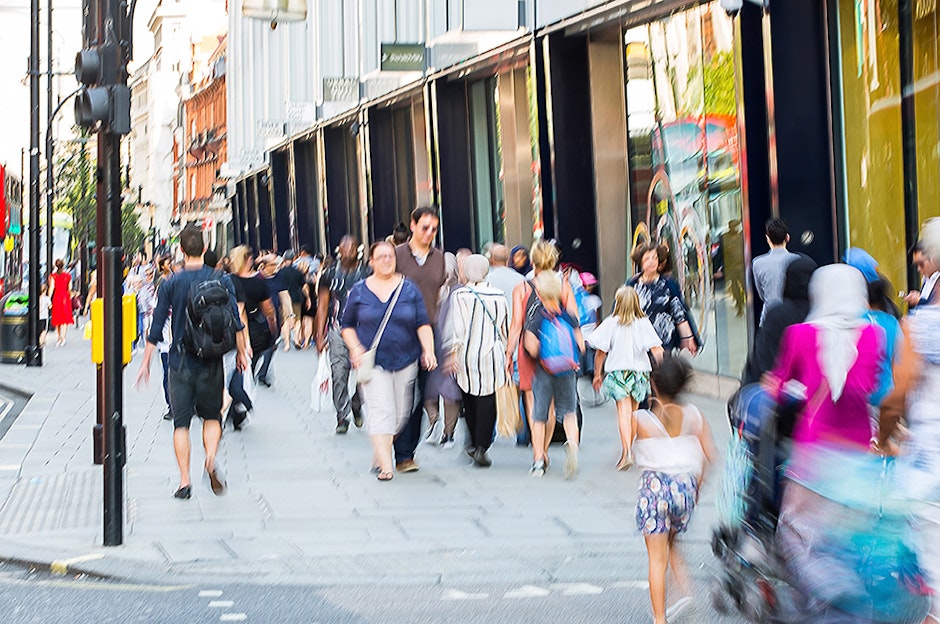Uninterrupted relationships with customers will heal the high street this holiday season
There are good reasons to feel optimistic about the outlook for brick and mortar retailers during this upcoming holiday season

A confident majority returned to stores last Christmas. Consumers rushed back to stores and restaurants in spite of the declining COVID situation and glut of online solutions between the second and third lockdowns.
Since the April reopening of non-essential retailers, consumers (and their spending) are again returning to stores. If we take home stores, we find a strong negative correlation between footfall recovery and online’s proportion of total sales over the last 12 months. With restrictions removed, consumers are being reconnected to the physical stores and a lockdown–free end to the year will help to reinforce these relationships.
Leisure travel is booming with consumers travelling in greater numbers and even greater distances. This is a real opportunity for retailers and the brands within, as this brings a wider audience into contact with their products. For instance, shoppers this year are coming from +25% further away to visit Oxford Street vs. last summer.
Target shoppers when they are in the office. Consumers are using their time in the city and town centres to indulge in dining and shopping experiences. We find that beauty, luxury and clothing stores in particular over-index with these audiences.
‘Non-essential’ retailers face a fight to reclaim shoppers from ‘essential’ grocery and pharma chains. This was illustrated by the experience of the beauty specialists last year whose recovery lagged behind the likes of Boots and Superdrug, and they did not benefit from the holiday surge.
Retail footfall peaks on the last full day of trading. Even the biggest online retailers have fulfilment limits around the holidays and as these options dwindle consumers turn their attention back to physical stores and the products they can hold and purchase on the spot.
Retail priorities differ across the country in the final days. Whether it's clothing, home or beauty stores, we find significant differences in those last-minute gift ideas across the UK and messaging needs to adapt to this demand.
In spite of the hardships they have faced over the last 18 months brick and mortar retailers continue to perform an essential role for many consumers. This is underlined by the surge in visitation we saw in the build up to Christmas 2020 and return of consumers to ‘normal’ levels following the third lockdown.
However, this isn’t simply a return to the old ways of shopping. For instance, the relative shift from working in the office to working from home will mean a reduction in the numbers of consumers going into city centres and retail districts, as well as their frequency of contact with stores and the brands within them, at least in the short-medium term.
With this geographical redistribution of consumers either permanently (i.e. moving out of the city) or part-time (i.e. 3 days working from home), brands will need to reassess their targeting strategy. This could enhance the size of the opportunity for high streets in smaller towns and cities and the potential value of regional media (e.g. out of home). Brands will also need to work to reconnect consumers whether on or offline in their new localities.
In addition, we find that those individuals returning to the office are maximising their time in the centre and indulging in retail therapy and treating themselves to eating or drinking out. With the holiday period fast approaching brands should look to target commuters and office workers whilst they are in proximity to their stores. It currently appears a significant opportunity for high end and fashion brands whose flagship stores are typically found in the major cities. Effectively understanding these consumer patterns will help brands not only combat the online-first brands, but also reclaim the share of spend that has been lost to ‘essential’ retailers who appeared to benefit from the consumer disconnect resulting from successive lockdowns.
Finally, with an eye firmly on the holiday season, we find that historically consumers turn their focus most intensely to physical stores in the final full days of trading, with apparel and electronics over-indexing. Despite the tremendous innovations in supply chains, even the online hegemons have their fulfilment deadlines and so in the final moments, consumers seek out retailers and products they can see and buy instantly. This dependability may provide an even greater opportunity for retailers in 2021 as the combined impact of Brexit and COVID cause supply issues. Whilst physical retailers may experience similar challenges through effective stock management, merchandising, and in-store assistance they can place their solutions front and centre for consumers.

